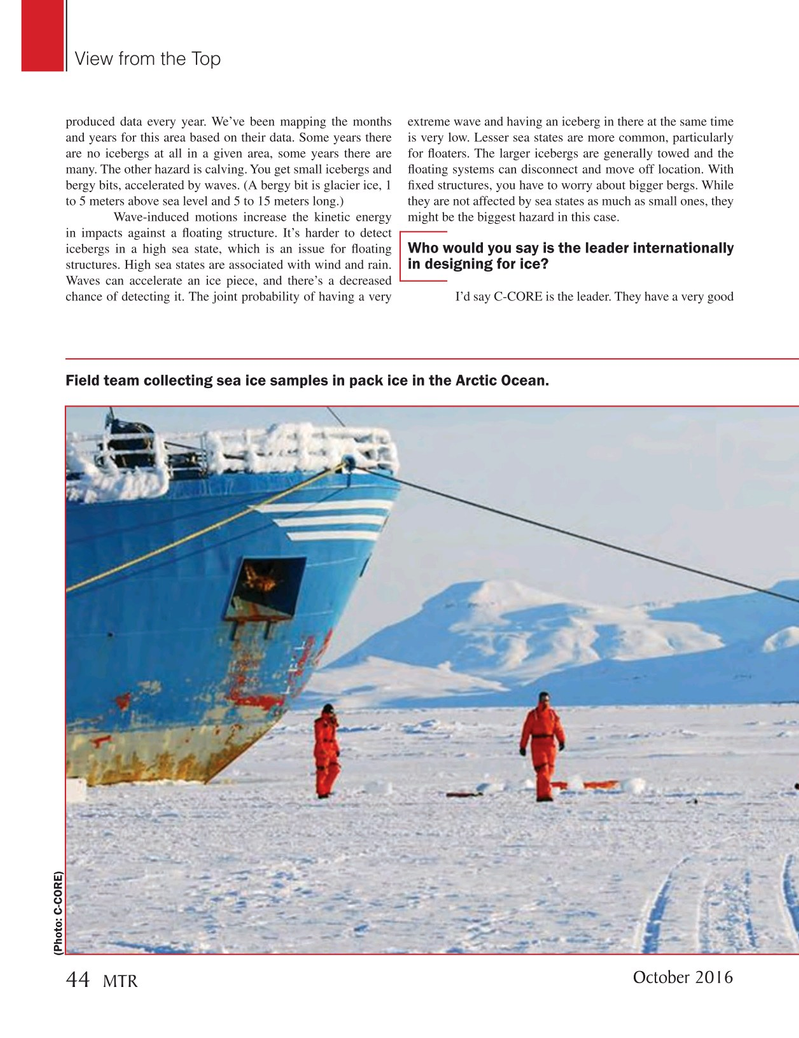
Page 44: of Marine Technology Magazine (October 2016)
AUV Operations
Read this page in Pdf, Flash or Html5 edition of October 2016 Marine Technology Magazine
View from the Top produced data every year. We’ve been mapping the months extreme wave and having an iceberg in there at the same time and years for this area based on their data. Some years there is very low. Lesser sea states are more common, particularly are no icebergs at all in a given area, some years there are for ? oaters. The larger icebergs are generally towed and the many. The other hazard is calving. You get small icebergs and ? oating systems can disconnect and move off location. With bergy bits, accelerated by waves. (A bergy bit is glacier ice, 1 ? xed structures, you have to worry about bigger bergs. While to 5 meters above sea level and 5 to 15 meters long.) they are not affected by sea states as much as small ones, they Wave-induced motions increase the kinetic energy might be the biggest hazard in this case.
in impacts against a ? oating structure. It’s harder to detect icebergs in a high sea state, which is an issue for ? oating Who would you say is the leader internationally structures. High sea states are associated with wind and rain. in designing for ice?
Waves can accelerate an ice piece, and there’s a decreased chance of detecting it. The joint probability of having a very I’d say C-CORE is the leader. They have a very good
Field team collecting sea ice samples in pack ice in the Arctic Ocean.
(Photo: C-CORE)
October 2016 44
MTR
MTR #8 (34-49).indd 44 9/27/2016 2:51:08 PM

 43
43

 45
45
